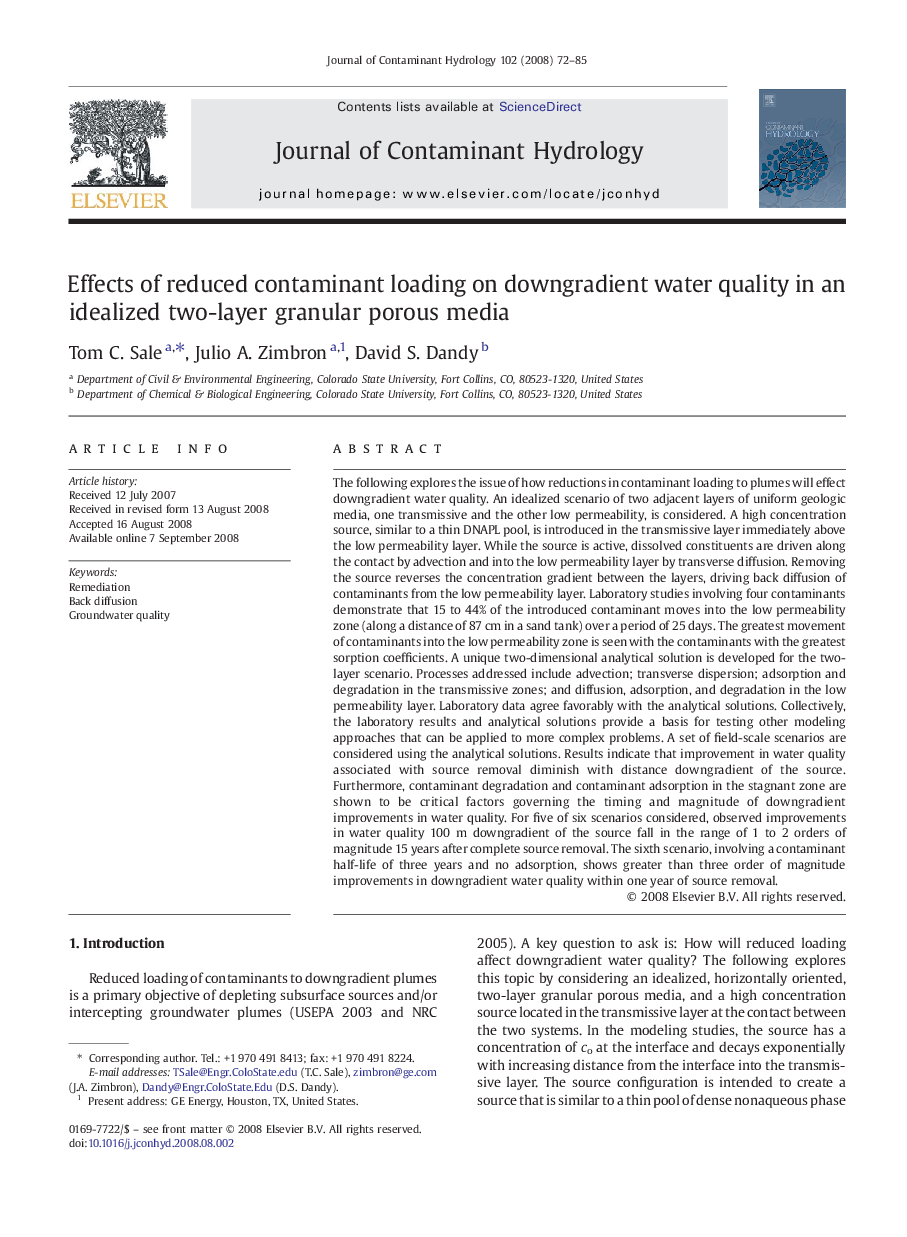| کد مقاله | کد نشریه | سال انتشار | مقاله انگلیسی | نسخه تمام متن |
|---|---|---|---|---|
| 4547365 | 1627107 | 2008 | 14 صفحه PDF | دانلود رایگان |

The following explores the issue of how reductions in contaminant loading to plumes will effect downgradient water quality. An idealized scenario of two adjacent layers of uniform geologic media, one transmissive and the other low permeability, is considered. A high concentration source, similar to a thin DNAPL pool, is introduced in the transmissive layer immediately above the low permeability layer. While the source is active, dissolved constituents are driven along the contact by advection and into the low permeability layer by transverse diffusion. Removing the source reverses the concentration gradient between the layers, driving back diffusion of contaminants from the low permeability layer. Laboratory studies involving four contaminants demonstrate that 15 to 44% of the introduced contaminant moves into the low permeability zone (along a distance of 87 cm in a sand tank) over a period of 25 days. The greatest movement of contaminants into the low permeability zone is seen with the contaminants with the greatest sorption coefficients. A unique two-dimensional analytical solution is developed for the two-layer scenario. Processes addressed include advection; transverse dispersion; adsorption and degradation in the transmissive zones; and diffusion, adsorption, and degradation in the low permeability layer. Laboratory data agree favorably with the analytical solutions. Collectively, the laboratory results and analytical solutions provide a basis for testing other modeling approaches that can be applied to more complex problems. A set of field-scale scenarios are considered using the analytical solutions. Results indicate that improvement in water quality associated with source removal diminish with distance downgradient of the source. Furthermore, contaminant degradation and contaminant adsorption in the stagnant zone are shown to be critical factors governing the timing and magnitude of downgradient improvements in water quality. For five of six scenarios considered, observed improvements in water quality 100 m downgradient of the source fall in the range of 1 to 2 orders of magnitude 15 years after complete source removal. The sixth scenario, involving a contaminant half-life of three years and no adsorption, shows greater than three order of magnitude improvements in downgradient water quality within one year of source removal.
Journal: Journal of Contaminant Hydrology - Volume 102, Issues 1–2, 14 November 2008, Pages 72–85